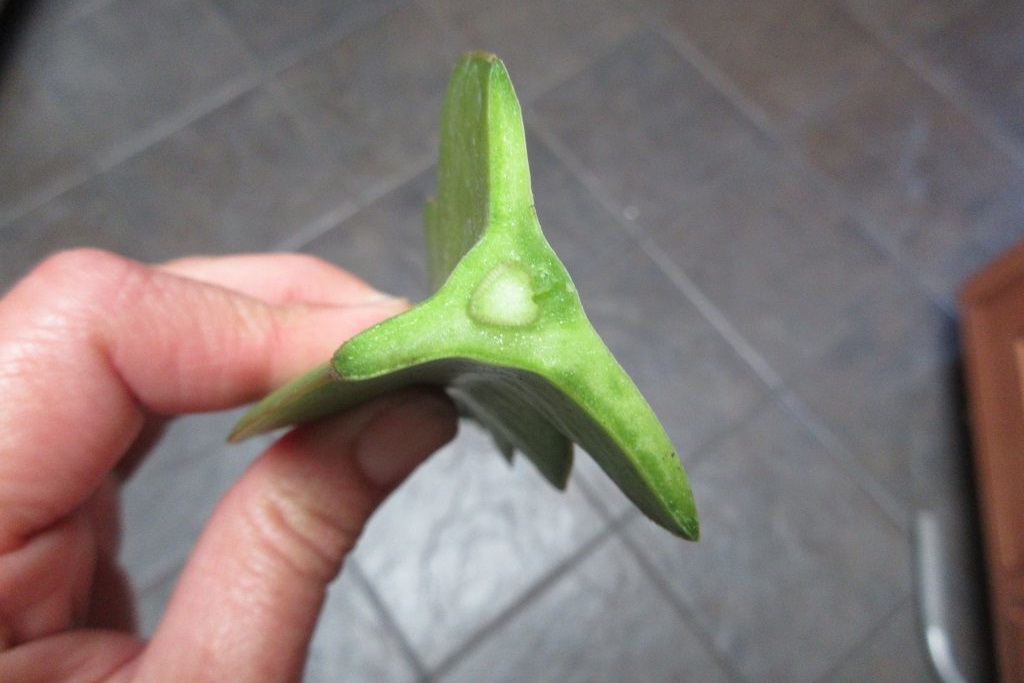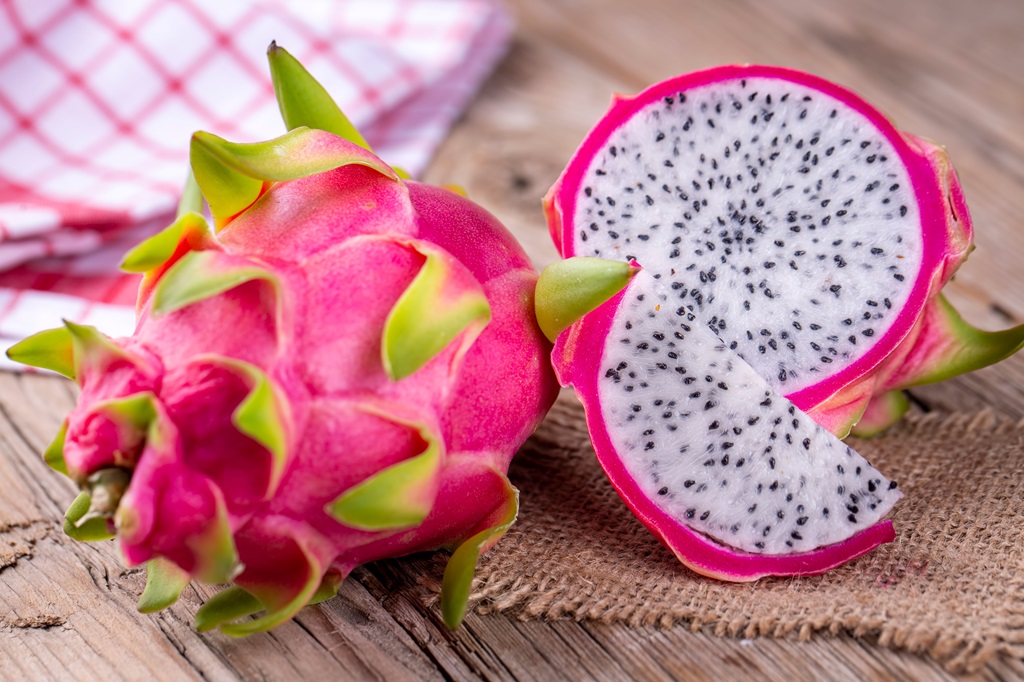Dragon fruit, or pitaya, is an exotic and delicious fruit grown worldwide in tropical and subtropical regions. The dragon fruit plant is a climbing cactus that can produce stunning flowers and fruit with a taste similar to kiwi or pear.
While dragon fruit can be grown from seed, the easiest way to propagate new plants is by taking and planting cuttings from an existing plant. Planting dragon fruit cuttings allows you to replicate the exact variety you want while avoiding the variation that can occur when growing dragon fruit from seed.
In this guide, you’ll learn how to plant dragon fruit cuttings. By the end of this guide, you’ll have all the knowledge and tips needed to successfully grow multiple dragon fruit plants from cuttings. Let’s get started!
Selecting and Preparing Dragon Fruit Cuttings
The first step to planting dragon fruit cuttings is to select appropriate cutting material from a healthy mother plant. Here are some tips for selecting and preparing fabulous cuttings:
Choose Healthy Stems
Pick dragon fruit stems that are healthy, disease-free, and at least 8–24 inches long. Select stems that are at least 1-2 inches thick. The best cuttings will come from the ends of long trailing dragon fruit stems.
Use Mature Wood
Take cuttings from mature brown or red-colored wood, not young green stems. Mature wood has the hormones needed for root development.
Cut at a Node
Make each cutting just below a node or joint, leaving at least 2-3 nodes on the cutting. The node contains a growth point where new roots and stems will emerge.
Prune Off Spines
Use a clean, sharp knife or pruner to take each cutting. Trim off any large spines from the cutting to make handling easier.
Prepare a Fresh Cut
Just before cutting cuttings, give the mother plant a fresh pruning cut right where each cut will be accepted. This exposes new wood and wound-response compounds.
Remove Flowers and Fruit
Eliminate any flowers, buds, or fruit from cuttings so the plant can focus its energy on root and shoot formation.
Keep Cuttings Cool
As you take your cuttings, please place them in a plastic bag or wrap them in a damp paper towel to keep them cool and moist. Don’t let cuttings sit out and dry out.
Selecting only the best stems and preparing them correctly will ensure your dragon fruit cuttings have the best chance at successfully rooting and growing into whole plants.
Rooting Dragon Fruit Cuttings
Once you’ve collected and prepared several good cuttings, the next step is rooting them to produce young dragon fruit plants. This involves providing warm temperatures, high humidity, and a suitable medium to encourage new root formation.
Use a Rooting Hormone
Applying a rooting hormone powder or gel to the bottom 2-3 nodes of each cutting can dramatically improve root development. Look for a powder or gel containing auxins like indole-3-butyric acid (IBA).
Choose a Rooting Medium
Good rooting mediums for dragon fruit cuttings include perlite, coarse sand, vermiculite, coco coir, or a combination of these. The medium should be light, airy, and fast-draining.
Plant in Propagation Trays
Plant cuttings in propagation trays filled with the rooting medium. Insert each cutting about 2-3 inches deep, leaving 2-4 nodes above the medium. Space cuttings are a few inches apart.
Provide Bottom Heat
Dragon fruit cuttings root best with bottom heat between 75-85°F. Use a heat mat under trays or place them near other warm equipment. Don’t let cuttings overheat.
Maintain High Humidity
High humidity is vital for rooting success. Cover trays with clear plastic domes or bags to keep humidity around 80-100%. Remove covers briefly daily to refresh the air.
Give Bright, Indirect Light
Keep trays in a warm spot with bright, indirect light. Avoid direct hot sun. Light is needed for growth, but too much sun will overheat cuttings.
Water Sparingly
Water is just enough to keep the rooting medium slightly moist but not saturated. Excess water can lead to rotting. Let the medium partially dry between waterings.
Most dragon fruit cuttings should show root formation in 3-8 weeks with this ideal moist, warm, humid environment. Gently tug on cuttings after a few weeks to check for resistance from new roots.
Transplanting Rooted Cuttings
Once dragon fruit cuttings have developed a sound root system with plenty of new white roots, it’s time to transplant them into larger containers or the garden. Follow these tips for successful transplantation:
Acclimate the Cuttings
Before transplanting, “harden off” cuttings by slowly reducing humidity and increasing sun and airflow over 7-10 days. This toughens up the plants.
Choose an Appropriate Container
Select a pot or planter at least 12 inches wide and 10 inches deep for transplanting. Make sure it has several drainage holes. Clay, plastic, concrete, and fabric pots all work.
Use Fast-Draining Soil
Dragon fruit, needs very well-draining cactus or citrus soil. Mix extra perlite, gravel, sand, or pumice to improve drainage. The soil should never stay soggy.
Plant at the Same Depth
Transplant cuttings at the same depth they were originally rooted, keeping the lowest nodes and roots buried while the upper stem and leaves sit above the soil.
Stake or Trellis Cuttings
Dragon fruit is a climbing plant, so provide a stake or trellis for support. Use soft material to tie the main stems loosely to support them as they grow.
Maintain Warmth and Sunlight
Keep transplanted cuttings in a very sunny, warm location protected from wind. Move plants outside gradually over a week or two once night temperatures stay above 50°F.
Your rooted dragon fruit cuttings will continue to increase with the proper care after transplanting. Be patient as the plants mature and begin flowering and fruiting.
Caring for New Dragon Fruit Plants
Young dragon fruit plants need attentive care in the first 1-2 years after planting to promote vigorous growth. Here are some tips for caring for your new plants:
Water When Soil Dries Out
Water young plants when the top few inches of soil dry, aiming to keep the soil moist but not soaked. Mature dragon fruit are more drought-tolerant.
Fertilize Every 2-4 Weeks
Use a balanced liquid fertilizer diluted to half strength every 2-4 weeks during the growing season. Avoid high-nitrogen formulas that spur excess leafy growth.
Guide Stems Onto Trellises
As new stems emerge, loosely tie or clip them onto supports to train growth horizontally along trellises or fencing. Space stems 12-18 inches apart.
Prune Off Early Flowers/Fruit
Pinch off any flowers or fruits that form on young plants during their first year. This allows energy to go to root and stem growth.
Scout for Pests
Check closely for signs of common pests like aphids, mealybugs, mites, or scale. Treat any infestations immediately and preventatively.
Protect Plants from Frost
In cool winter regions, insulate roots and cover plants to protect from frost and freeze damage. Move potted plants indoors.
With attentive watering, fertilizing, pruning, and pest management, your dragon fruit transplants will flourish into large, vigorous vines.
Common Problems and Solutions
While dragon fruit cuttings are relatively easy to root and grow, you may encounter some potential issues. Here are some troubleshooting tips:
Cuttings Not Rooting
If cuttings fail to root after 6-8 weeks, the likely causes are incorrect temperatures, light, or moisture levels. Or the cuttings were too young/immature. Try taking new cuttings.
Rotting Cuttings
If cuttings rot and collapse, excess moisture is usually to blame. Allow more air circulation, waterless, and use a better-draining rooting medium in the future. Sterilize all equipment to prevent disease spread.
Leaf Drop After Transplanting
It’s normal for some leaves to turn yellow and drop after transplanting while the plant acclimates. As long as new growth emerges, the roots are probably OK. Ensure regular watering and fertilization.
Slow Growth
Insufficient light, nutrients, or root room can all cause slow growth. Try moving plants to a sunnier location, fertilizing more regularly, or repotting into larger containers if pot-bound.
Pest Damage
Aphids, mealybugs, mites, and scale insects can all attack dragon fruit plants. Check the undersides of leaves for any signs of pests. Remove them with strong blasts of water, or use insecticidal soap sprays. Be sure to get complete coverage.
Fruit Not Setting
Dragon fruit won’t be set fruit without cross-pollination between different varieties. For proper pollination and fruit set, plant at least two compatible types within 50 feet of each other. Hand pollination can also help.
Fruit Splitting Open
Rapid fluctuations in moisture levels can cause the delicate skin of dragon fruit to split. Regular watering maintains even soil moisture. To protect ripe fruit from rain splitting, cover them with bags.
Plant Collapsing or Dying
Root rot is often to blame if a previously healthy dragon fruit plant suddenly collapses or declines. Improve drainage immediately and allow soil to dry out between waterings—Disinfect tools to prevent spread.
By identifying and quickly addressing any problems that emerge, you can keep your dragon fruit cuttings thriving into a bountiful fruiting plant. Let’s wrap up with some key takeaways.
Conclusion and Key Takeaways
Growing dragon fruit by planting cuttings is an easy and reliable propagation method for this incredible cactus plant. Follow this complete guide, and you’ll have great success at every step:
- Prepare cuttings from fresh, mature stems on a healthy mother plant.
- Root cuttings using warmth, high humidity, and proper medium. Be patient for new roots.
- Transplant into containers once well rooted, providing support and ideal care.
- Give frequent water, fertilizer, and pest prevention to encourage strong establishment.
- Identify and troubleshoot any issues quickly to keep plants vigorous.
In no time, you can have multiple lush, exotic dragon fruit vines grown entirely from cuttings. The patience required will be rewarded with beautiful dangling flowers and delicious tropical fruits.
Frequently Asked Questions
How long does it take for dragon fruit cuttings to root?
Most dragon fruit cuttings will root in 3-8 weeks when properly warm, humid conditions are given. Check for root formation after three weeks.
Can you root dragon fruit in water?
It’s possible but challenging to root dragon fruit cuttings in plain water. To improve success rates, use a soilless rooting medium like perlite or vermiculite instead.
Where should I cut dragon fruit for cuttings?
Always take dragon fruit cuttings from mature stems, cutting just below a node or joint. Select side shoots at least 8 inches long.
How do you increase root growth in cuttings?
The keys to maximizing root growth from dragon fruit cuttings are using a rooting hormone, providing bottom heat around 75-85°F, and maintaining high humidity.
When should I transplant my rooted dragon fruit cuttings?
Transplant dragon fruit into larger containers or the garden after the cuttings have developed a robust root system, usually 6-10 weeks after propagation.








